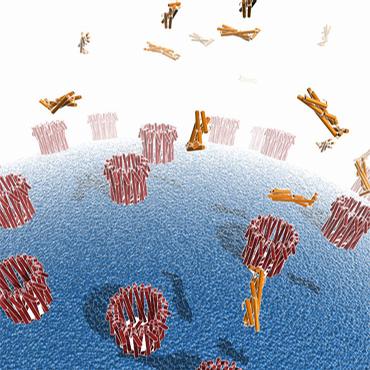Team:Paris/Addressing overview clya
From 2009.igem.org
(→B.1. Let's introduce it) |
(→B. ClyA) |
||
| Line 18: | Line 18: | ||
| - | We work on the cell-cell communication using vesicle. That’s why we have to find something to track our vesicle, but also put a signal peptide (or anything which can create a signal) in this vesicle, in order to make a signal transduction when the vesicle fusion with his target cell. ClyA seems to have an interesting ways to success in these functions. | + | We work on the cell-cell communication using vesicle. That’s why we have to find something to track our vesicle, but also put a signal peptide (or anything which can create a signal) in this vesicle, in order to make a signal transduction when the vesicle fusion with his target cell. So ClyA seems to have an interesting ways to success in these functions, in fact ClyA in E.Coli in high expression in OMV, and it’s one of the proteins that can pass the cytoplasm to the persiplasm and integrated to vesicle. |
| - | + | However there are some inconvenient because ClyA is an alpha-PFT for Pore Forming Toxins. PFTs are potent virulence factors class starting in a soluble form to an outer membrane-integrated pore. They exhibit their toxic effect either by membrane permeability barrier destruction or by toxic components delivery through the pores which forming by several assembly 8 or 13 ClyA subunits. PFTs can be subdivided into two classes; α-PFTs and β-PFTs, depending on the suspected mode of membrane integration, either by α-helical or β-sheet elements. | |
| + | [[Image:ClyA.jpg|150px|center]] | ||
| + | So some article show that E.Coli K12 using this ClyA to “destruct” other bacteria or eucaryot cell. But this virulence was not show in same strain. | ||
| - | + | In some article, it’s fused to GFP in order to observed the vesicle, so we think the fusion of ClyA with a peptide signal can induct the receptor when the vesicle fusion to its cell target liberate the Cly A in the target cell. | |
| - | + | ||
| - | + | ||
| - | + | ||
| - | + | ||
| - | + | ||
| - | + | ||
| - | + | ||
| - | + | ||
| - | + | ||
| - | + | ||
| - | + | ||
| - | + | ||
| - | + | ||
| - | + | ||
| - | + | ||
| - | + | ||
| - | + | ||
| - | + | ||
| - | + | ||
| - | + | ||
| - | + | ||
| - | + | ||
| - | + | ||
| - | + | ||
| - | + | ||
| - | + | ||
| - | + | ||
Revision as of 21:08, 27 September 2009
iGEM > Paris > Adressing > Overview > ClyA
B. ClyA
We work on the cell-cell communication using vesicle. That’s why we have to find something to track our vesicle, but also put a signal peptide (or anything which can create a signal) in this vesicle, in order to make a signal transduction when the vesicle fusion with his target cell. So ClyA seems to have an interesting ways to success in these functions, in fact ClyA in E.Coli in high expression in OMV, and it’s one of the proteins that can pass the cytoplasm to the persiplasm and integrated to vesicle.
However there are some inconvenient because ClyA is an alpha-PFT for Pore Forming Toxins. PFTs are potent virulence factors class starting in a soluble form to an outer membrane-integrated pore. They exhibit their toxic effect either by membrane permeability barrier destruction or by toxic components delivery through the pores which forming by several assembly 8 or 13 ClyA subunits. PFTs can be subdivided into two classes; α-PFTs and β-PFTs, depending on the suspected mode of membrane integration, either by α-helical or β-sheet elements.
So some article show that E.Coli K12 using this ClyA to “destruct” other bacteria or eucaryot cell. But this virulence was not show in same strain.
In some article, it’s fused to GFP in order to observed the vesicle, so we think the fusion of ClyA with a peptide signal can induct the receptor when the vesicle fusion to its cell target liberate the Cly A in the target cell.
 "
"
